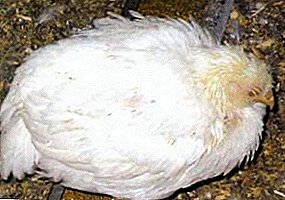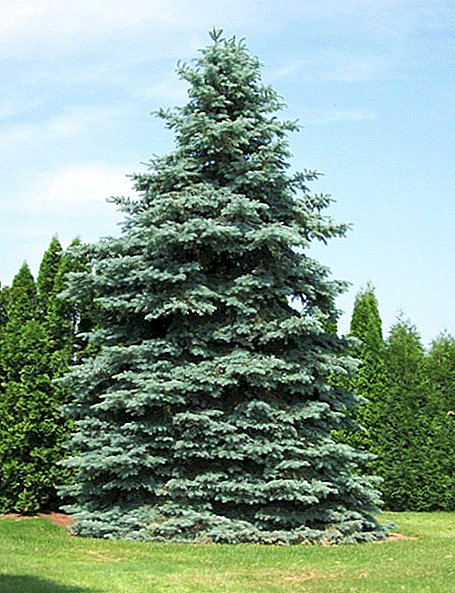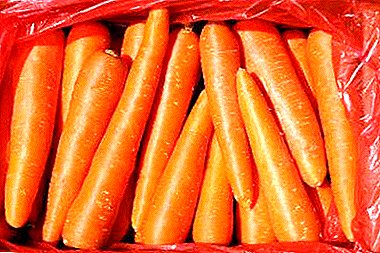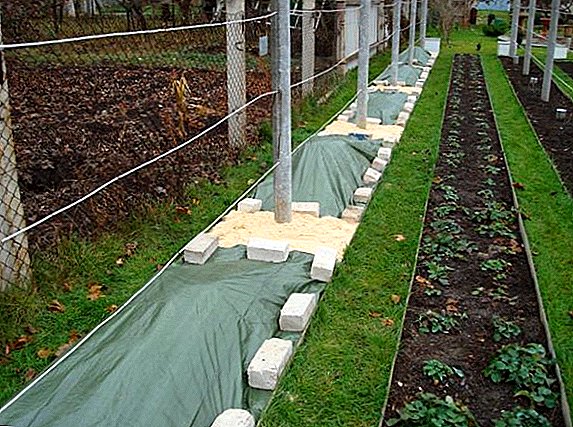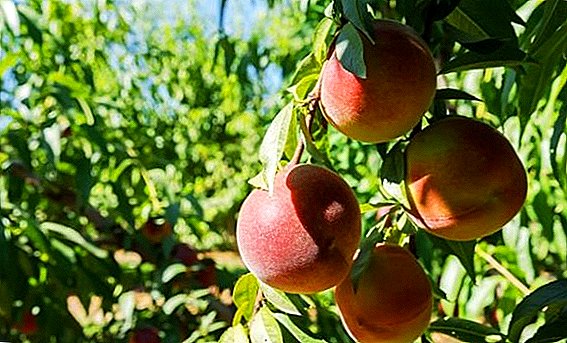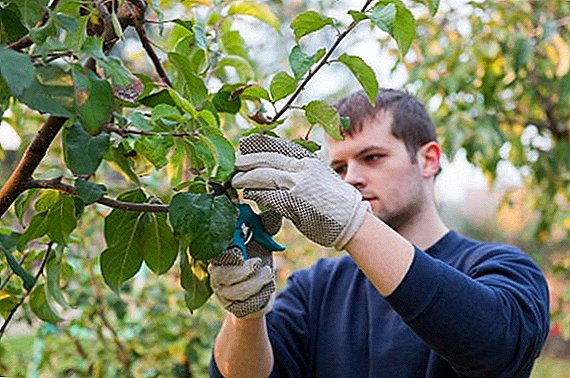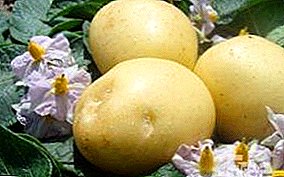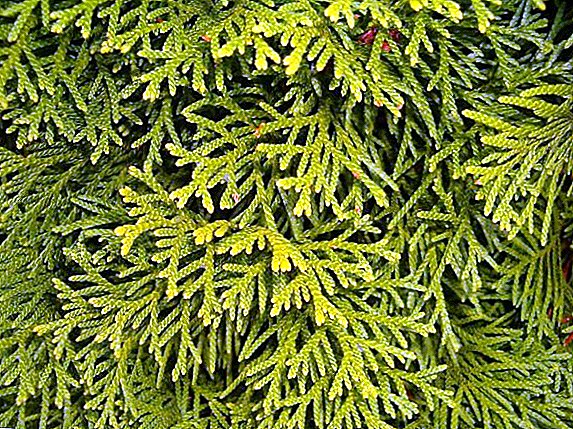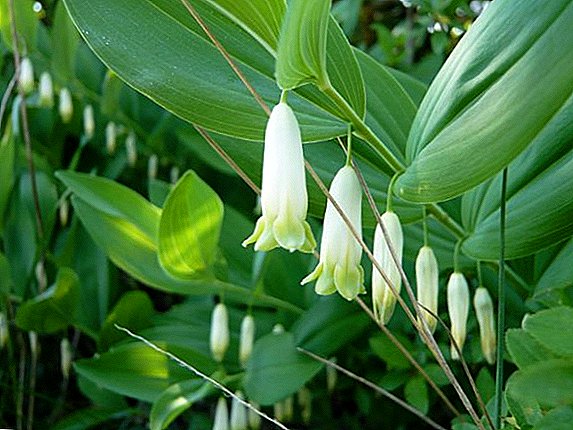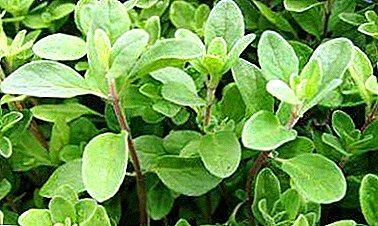
Fans of fragrant spices often try to grow their own spicy plants directly on the windowsill or in the garden to get a high-quality and environmentally friendly product. One of the most popular cultures is marjoram, which is great for most dishes. But this representative of the family of yasnotkovyh is rather picky about temperature conditions, soil and care, therefore not everyone manages to achieve the desired results when it is grown.
In order to succeed, it is necessary to learn more about which varieties of marjoram to give preference to and the agrotechnology of its cultivation.
general information
 The homeland of the marjoram is the territory of Southern Europe, the Middle East and the Mediterranean, in the wild it is also common in Asia Minor and North Africa. As a spice a plant is cultivated in:
The homeland of the marjoram is the territory of Southern Europe, the Middle East and the Mediterranean, in the wild it is also common in Asia Minor and North Africa. As a spice a plant is cultivated in:
- Western European countries;
- India;
- Central Asia.
Marjoram is grown in small quantities in the Caucasus, Ukraine, the Baltic States, Moldova and the Crimea. It is worth noting, representatives of the family yasnotkovyh divided into floral and leaf species. The first of them is most often grown in Central Europe, and the second - in southern countries.
Favorable time and climatic conditions
The main difficulty of growing spicy culture is that it is very thermophilic and does not tolerate the slightest frost. For this reason, gardeners living in the middle lane, have to tinker with seedlings.
Seeds germinate at a temperature of at least +15 degrees and they are sown in seedling greenhouses not earlier than April. The optimum conditions for the emergence of shoots is considered to be the temperature of + 20-25 degrees. Strengthened seedlings are transferred to a permanent place in the open ground in mid-June, when the spring cataclysms will be left behind and the weather will be warm.
Also, the seeds are buried in the ground before winter, having previously covered them with a layer of dry peat, sawdust, straw, or covered with film and glass. With the onset of spring covering material is gradually removed.
In a cool climate, the seeds of marjoram may not grow, if they are sown early in the open ground, so it is better to grow it as an annual indoor plant or seedling method.
It is worth noting that some varieties of marjoram are distinguished by late periods of vegetation and react more steadily to a decrease in temperature, so it is permissible to sow them a little earlier - at the end of March. For example, "Gourmet", harvested 120 days after germination, and "Tushinsky Semko" - after 130-140.
Choosing a place in the open ground
 To get a good green mass, experts recommend planting marjoram on western or southern slopes with fertile soil. The bed should be located on a sunny, well-warmed and ventilated place (without penumbra). However, it should be borne in mind that culture is afraid of drafts and strong winds.
To get a good green mass, experts recommend planting marjoram on western or southern slopes with fertile soil. The bed should be located on a sunny, well-warmed and ventilated place (without penumbra). However, it should be borne in mind that culture is afraid of drafts and strong winds.
The most suitable for the cultivation of this culture are light soils (sandy or loamy), provided with organic matter and nutrients. On depleted areas, it is possible to specially build high-baskets for seedlings, filled with soil mixture consisting of humus, top peat (1/3 part), garden black soil, sod and leaf earth.
Important: the northern slopes and shade cause a decrease in yield and deterioration in the quality of plant essential oils.
Soil preparation
It is desirable to pay attention to the soil since autumn. - to make such organic and mineral fertilizers as potassium sulphate, humus, superphosphate. In the spring you can add urea or ammonium nitrate. Immediately before planting, the land is enriched with the following substances (per 1 sq. M):
- potassium salt - 10-15 g;
- superphosphate - 35-40 g;
- urea - 15-20 g
Ideally plant marjoram in loose soil, but digging should be shallow - no more than 10-15 cm. It is in the lush land that the roots of the plant are well distributed and take root faster during transplantation.
Cultivation
Sowing seeds
Often the future harvest depends on the quality of the seed.Therefore, when going to the garden shop, you need to pay attention to the date of collection of seeds and their packaging, because The marjoram's shelf life is no more than 1 year. Old seed may not climb. This product is best purchased only in specialized stores, from large manufacturing companies, breeders or proven sellers. Ask to show certificates of quality so that instead of marjoram weeds do not grow.
 It is worth noting that if you have a positive experience in the cultivation of marjoram, you can independently collect the seeds, however, given the short period of their storage, you should not make reserves for future use.
It is worth noting that if you have a positive experience in the cultivation of marjoram, you can independently collect the seeds, however, given the short period of their storage, you should not make reserves for future use.
How to grow marjoram from seeds?
- To plant crops in open ground, you must wait until the soil warms up sufficiently.
- Then you need to carefully consider all seeds, discarding dried, small or damaged. To quickly get the first shoots and disinfect the material from harmful microorganisms, the seeds are evenly placed on a piece of cloth soaked in 1% solution of manganese and covered with a film. Then all this is left overnight in a warm place, after which it is dried and sown in the grooves with a depth of 15-20 mm, located at a distance of 150 mm.
Board: for convenience, the seeds can be mixed with dry (calcined) river sand, and then distributed in the ground.
- Landings are not buried, but powdered with a layer of sifted earth through a sieve. At the very end of the process, the soil is moistened with an atomizer with a small amount of water.
If all the necessary conditions are met, seedlings will appear in 2 weeks.
We offer to watch a video about growing marjoram from seeds:
Seedling method
How to grow bushes?
To get strong bushes for further transplantation in open ground, seeds are sown in containers for 2/3 filled with nutrient soil (2 parts of humus, 1 part of sand, leaf earth and perlite). Landings are kept at a temperature of + 20-25 degrees and a land humidity of not more than 60%. As the seedlings grow, weak plants are periodically removed so that the distance between them is 50 mm.
When the shoots will have 2-3 pairs of leaves, they will be ready for a dive. Before planting in the open ground, plants are hardened - in good, clear weather, boxes are taken out for a few hours if the air temperature reaches an average of + 15-20 degrees. Subsequently, the quenching period gradually increases, so that the culture gets used to the sun, wind, and less sick in a new place.
Transfer to ground
Planting crops on the beds is about 50-55 days after the first shoots. Since the marjoram bushes grow lush, the holes for them must be dug at a distance of 20 cm between the seedlings and 40 cm between the rows, so that the plants get enough sunlight and do not crush each other. Next, proceed as follows:
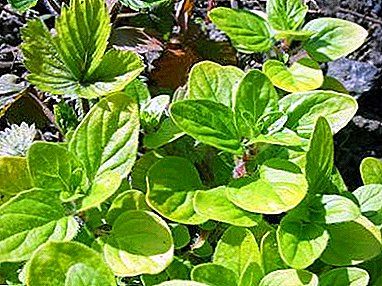 plentifully shed the earth in containers with seedlings so that the root system is not damaged during transplantation;
plentifully shed the earth in containers with seedlings so that the root system is not damaged during transplantation;- pour warm water on the prepared holes in which the plants are planted;
- fill up a sapling with a layer of earth, and then slightly raise it so that voids are formed under the root that allow air and water to pass through.
In order to avoid the appearance of a crust on the soil, the planted bushes are not recommended to be immediately watered from above with water.
It is unacceptable to fall asleep when planting tender shoots of large lumps of earth. It is best to prepare in advance separately loose and light soil for sprinkling the roots.
To help the seedlings adapt to new conditions, it is protected with covering material for 2 weeks. At the first time after transplantation, marjoram must be watered every other day and loosen the ground after each watering.
Further care
For seeds
After sowing the material according to the above scheme, the moistened soil is necessarily covered with a film dome or glass and is kept at a temperature of + 20-23 degrees. With the advent of the first shoots, the coating is removed, and the temperature regime drops to about + 12-16 degrees (for a week). Next, the plants are contained in such conditions:
- + 18-20 degrees in the afternoon;
- + 14-16 degrees at night.
The first time is best not to expose the immature shoots to direct sunlight in order to avoid burns. Optimally contain them in the penumbra. Also it is important to carry out timely watering with soft water at room temperature. Otherwise, the weak root system will begin to rot and the plants will die.
For the young shoots
To obtain fragrant foliage, the soil under the seedlings must be periodically moistened and loosened, and weeds should also be removed from the beds in a timely manner. they can shade plants and take nutrients out of the ground. Marjoram is a light-loving and drought-resistant culture, so it does not tolerate shade or penumbra. The optimum temperature for the normal growth of the spice is +25 degrees.
To obtain a succulent green mass, the soil moisture should be 50-60%.
The first feeding is carried out no earlier than 25 days after transplanting into the ground. For this, sprouts are watered with a solution consisting of 1 bucket of water and 15 g of ammonium nitrate. Liquid volume per 1 square. m should be approximately 50 ml. Such treatments are carried out no more than 1 time in 15 days. Fertilizer saltpeter can be alternated with other complex fertilizers. With the growth of culture, the number of fertilizing and watering is reduced.
As a fertilizer, you can use wood ash or kemira.
Features of breeding at home
 Growing fragrant spicy greens is possible in flower pots on the windowsill in the apartment. Containers with plants are conveniently kept in places such as:
Growing fragrant spicy greens is possible in flower pots on the windowsill in the apartment. Containers with plants are conveniently kept in places such as:
- window sills;
- glazed balconies (until autumn);
- bright, warm rooms (on the tables, tables, etc.).
When choosing a place for marjoram, you need to remember that during the flowering period it exudes a strong aroma, so, for example, it is not recommended to put it in the bedroom.
Regular airing of rooms / balconies in the warm season will be an excellent prevention of the appearance of cultural diseases. It is also permissible to make pots in the summer.
Flower forms of marjoram are ideal for pots, and for pots - short, bushy and early ripening.
The seasonal period is not particularly important when growing such a spice in an apartment, but before sowing it is worth considering the fact that the plants obey biological cycles, therefore it is best to plant in spring, because This will increase the percentage of seed germination. In the autumn, marjoram is propagated by dividing the bush and cuttings..
Tanks with greens in winter are placed on the south side, and in summer - on the west or east. Planting and further care of the plant do not differ from the process of growing crops in open ground.
If the apartment has little natural light, sprouts provide artificial lighting (at least 6 hours a day).
In order for the bushes in an apartment to grow as long as possible (2-3 years), they need to be fed once a month with an agrolife or put biohumus in a pot. In the future, they are updated and transplanted in containers with a new ground.
Harvesting
Marjoram is ready for harvest at the beginning of flowering, which usually happens in August. If the gardener plans to get the most lush foliage, you need to cut the flower stalks immediately after they appear, but it is worth considering that the flowers themselves are an excellent addition to tea, tinctures and raw materials for decoctions. Sprigs are cut with a sharp knife at a distance of at least 10 cm from the ground. Re-pruning regrown bushes is carried out in late September - early October.
Collected greens are laid out in a thin layer on a flat surface. and dried in a warm, well ventilated and shaded room. As soon as the mass dries and becomes brittle, it is crushed and transferred to hermetically sealed containers. In this form, marjoram can be stored for 1 year.
Important: cut shoots can not be left in direct sunlight, because This will lead to loss of essential oils.
Diseases and pests
 The green mass of marjoram contains from 1 to 3.5% of essential oils, which provides it with protection against most species of insects. However, the smell of this culture attracts marjoram mole, which is best dealt with using special pheromone or glue traps. Insecticide solutions are also used to combat the larvae.
The green mass of marjoram contains from 1 to 3.5% of essential oils, which provides it with protection against most species of insects. However, the smell of this culture attracts marjoram mole, which is best dealt with using special pheromone or glue traps. Insecticide solutions are also used to combat the larvae.
Of the fungal diseases, plants are most often affected by Alternaria, which appears on the leaves as dark spots of irregular shape. In order to avoid the spread of the disease, it is necessary to inspect the plantings regularly and remove diseased specimens in a timely manner. In order to prevent the reduced intensity of irrigation, provoking the spread of fungi. If a large area is affected by alternaria, the plants are treated with a solution of fungicide.
What to plant before and after this spice?
The best precursors for planting marjoram are onions, potatoes, legumes and cabbage. In the area where the leaf culture was grown, it is good to plant roots later on. For example, radish, carrots, beets or turnips.
Having mastered the basic rules of agricultural technology of the marjoram, even a novice gardener will be able to independently grow up a delicious, aromatic and healthy seasoning, from which incredibly delicious meals, drinks and even medicines can be obtained.


 plentifully shed the earth in containers with seedlings so that the root system is not damaged during transplantation;
plentifully shed the earth in containers with seedlings so that the root system is not damaged during transplantation;